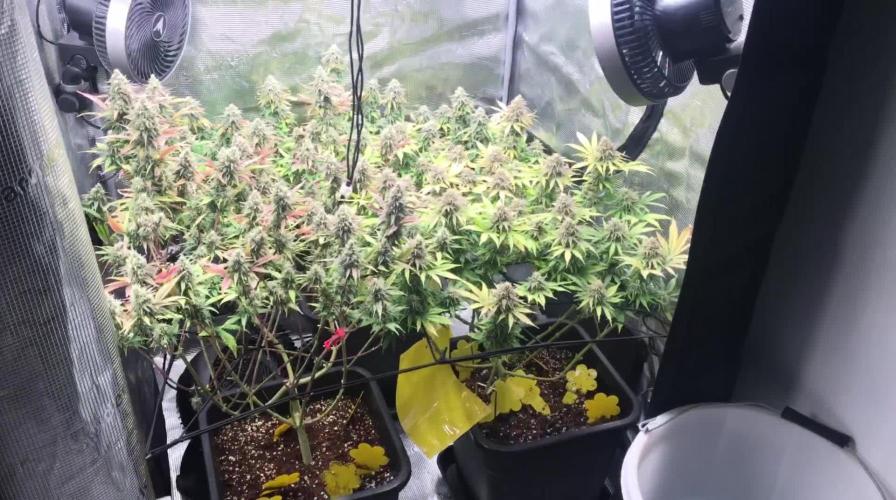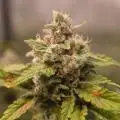The Grow Awards 2026 🏆 



























Likes
Comments
Share


@Roberts
Follow
Pure Ice cream clone is growing great. She is stretching great, and I have been doing hst on the branches to keep them out of the light. Everything is going really good at the moment. She is eating and drinking a lot. Looks like she is going to produce a good yield if everything stays going good. Thank you Pure Instinto, and Spider Farmer.
🤜🏻🤛🏻🌱🌱🌱
Thank you grow diaries community for the 👇likes👇, follows, comments, and subscriptions on my YouTube channel👇. ❄️🌱🍻
Happy Growing 🌱🌱🌱
https://youtube.com/channel/UCAhN7yRzWLpcaRHhMIQ7X4g
Likes
9
Share


@RdSkM
Follow
No fueron cosechadas todas al mismo tiempo. Unas empezaron floración primero que otras.
Likes
21
Share


@GODSGIFT_2005_JM
Follow
🍼Greenhouse Feeding BioGrow
⛺️MARSHYDRO
The ⛺️ has a small door 🚪 on the sides which is useful for mid section groom room work. 🤩
☀️ by VIPARSPECTRA (models: P2000 & XS 2000)
Likes
54
Share


@GarciasGarden
Follow
SOOO I got a surprise!!! LAST MINUTE I find out that this bi*** decided she wanted to hermie and I ended up getting a LITTLE BIT OF SEEDS in the lower buds I mean it’s barely any bit I still don’t even know how it happened? No MALES at all ! But other then that great strain smells great and looks beautiful!
Likes
74
Share


@Ferenc
Follow
Day 44, 2nd of November 2021:
Hi there.
So the plants had 2 days of darkness before the lamp was on again and from today it is 12/12.
Big change also is the power: It is now on full power which is 240W so 100% capacity.
Ventilation is different as well under the 12 hours period when the lamp is on it switches 1 hours on and after one hour off mostly to keep the temperature and of course because of fresh air flow. When the lamp is off it switches on in every 2 hours for 15 min at the same time with the extraction fan.
The extraction fan is on 12 hours when the lamp is, and then it switches on in every 2 hours for 30 min.
That's all a bit more water for them from today also. Humidity quite the same, temperature as well.
Fertilization changed, the BioBizz family raised up to be 2ml/L each so it is like 2ml/L of BioGrow, 2ml/L of BioBloom, 2ml/L of TopMax... see the ratio above.
Previously it was just 1ml per liter each.
The schedule of the fertilization has not changed happnes 2x a week except epsom salt just 1x a week.
Not much to mention as it just started.
Likes
3
Share


@Joaka
Follow
se acerca la ultimas semanas, esta semana se dejo de aplicar fertilizante con nitrogeno. se ve una translocacion sana hasta el momento. se espera que en las proximas semanas incremente el nivel de tricomas.
Queda poco!!!
Pd: pido disculpas a aquellos que siguen de cerca este diario, no pude actualizar a tiempo en las ultimas semanas, espero poder actuaizar de forma oportuna las ultimas semanas.
Likes
6
Share


@Whodeletti
Follow
Die letzten Wochen kam ich leider nicht zur Dokumentation, daher jetzt nur die Ernte Bilder, angaben zum Gewicht kommen noch.
Wet Cut, 3 x Gorilla Zittlez , an Tag 57 der Blüte.
Likes
16
Share


@CapeGrows
Follow
This week we kept everything pretty steady in terms of EC and PH levels.
We focused a bit more on training as the week went along and the plants are reacting well.
The biggest challenge is keeping the environment steady, but the humidifiers seem to be doing their thing.
Processing
Likes
67
Share


@CommanderCannabis
Follow
Buds are looking pretty. Already nice frosting of trichomes and density for small size is surprising. Have been worried about my roots and have taken all need steps to try and fix it. So far Daphni shows no signs of stress or nutrient lose. Knock on wood. Will be playing Velvet Underground for her this week. Does it make sense to cut off bad roots?
Likes
44
Share


@Chedderbob112
Follow
Waiting on a full plant hang dry so will wait at least two weeks maybe three hope ma vegging station holds up n can dae tge damage the now as av said guys this is definitely not the perfect set up am not on good terms with land lord so basically squatting here lol and growing and a got caught with one in this house the land lord doesn’t even know lol 😂
Likes
5
Share


@Thedibber
Follow
31/10/25 - Not long now until the 2x Bubba cheesecake can move into the 3x3 and flip to flower under a scrog. 2x bubba cheesecake + 1x Badazz OG cheese going into the 3x3.
Likes
43
Share


@Organic_G
Follow
Ernte ist ziemlich nah, werde die Ernte in 3 aufteilen, damit der mittlere und untere Part nachreifen kann…
Da ich die RH nicht wirklich runter bekomme und kein Schimmel riskieren will werde ich mit hoher wahrscheinlich das obere Drittel morgen ernten und direkt zum Trocknen aufhängen…
Time will tell
Likes
207
Share


@DogDoctorOfficial
Follow
Day 72 Flower and this cuties are almost ready to harvest but not quite there yet 😅 i will keep looking as close as possible and checking every day hehehe but for now i will keep on watering since they are keeping on drinking and the trichome are not mature to my like yet 💚💚💚😍😆🙏🙏🙏🙏
Growers love to you all , and as always thank you guys for reading my diaries , i truly appreciate your time , your love and it all 🙌🙌🙌
And with enormous honor and pleasure that i start collaborating with Zamnezia and Viparspectra
For this run i will have the pleasure of growing some Runtz genetics from Zamnezia seeds that they wore kind enough to send me for test and review 🙏🙏🙏💚💚💚🙏🙏🙏 and for the testing and reviewing i was blessed with the VIPARSPECTRA model P2000💚💚💚🙏🙏🙏 they wore amazing and send me this LED light for me to do some testing and some reviews. Special thanks to Zamnezia and to Viparspectra for this opportunity, lets make magic together 💚💚💚🙏🙏🙏
All i grow is medicine for myself, for me and for my best friend with is me 😆 nothing to sell, so don’t even ask 😅💚💚💚
All info and full product details can be find in can find @
https://viparspectra.eu/collections/grow-lights DISCOUNT CODE 5% - DOGDOCTOR ( all store )
https://www.zamnesia.com DISCOUNT CODE 10% - GROWITGD ( just for seeds )
https://aptus-holland.com/
More info and updates @
https://growdiaries.com/grower/dogdoctor
https://instagram.com/dogdoctorofficial
https://youtube.com/channel/UCR7ta4DKLFMg2xxTMr2cpIg
💚💚💚Growers love to you all 💚💚💚
Likes
20
Share


@TheGourmetWeed
Follow
Hey guys!
So, finally Saturday I chopped her down. She looked now ready and delicious, although I only notice yesterday how many seeds she has allover the place. She hermied in front of me without noticing, not good at all and need to start looking much better and in detail into the plants.
Feel like an idiot now.
Anyways, it was a full week!
Emptied the grinder collector and pressed it down a little, makes a very nice smoke, light but pleasant, the kind of stuff it keep you going all day without the dumb effect.
From all trimming made the bubble hash. Got a little too green as the 220micron bag's stitches slightly opened letting some contaminants in the final mix, hence the green color.
This was a hit. in opposition to the grinder stuff, this sent me straight to the moon, really heavy stone effect, even thinking was hard. Reminded me those afghan/ moroccan balls we used to get back in the early 2000's.
The weed itself it's still drying so the smoke report will be updated in there.
715g of fresh cut plant is good, let's see the potency and the seeds. Might turn it all into bubble hash, if I see it'll be an hassle to remove seeds.
On an earlier bud I've cut and dried, smoked it and you can see pure white ashes in the bong. Ain't that a beauty?



































